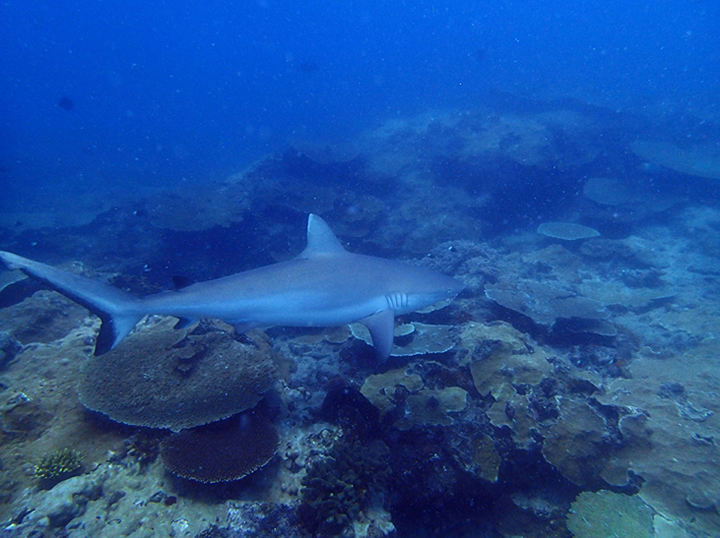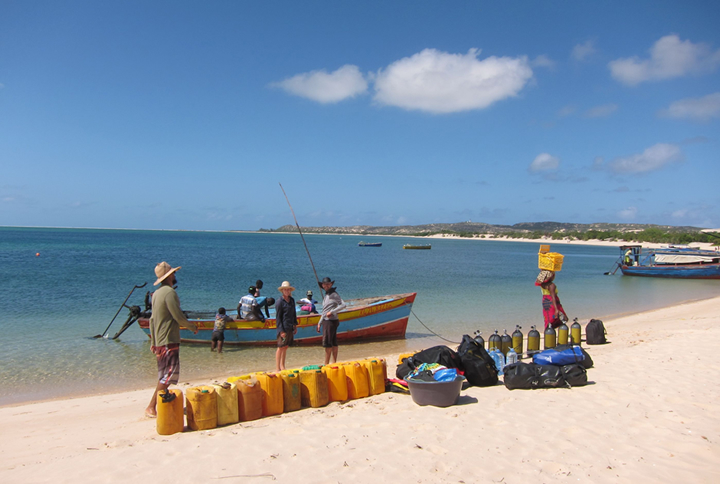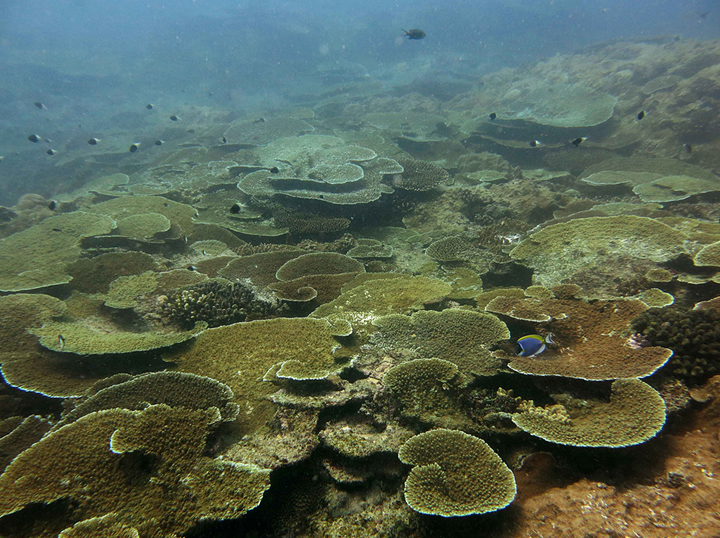Expeditions: Moçambique
Members of LECAR are just finished an expedition and sampling on Bazaruto Archipelago.
The Bazaruto Archipelago is located in Southern Mozambique and consists of several islands along a large bay of
shallow sand banks and extensive seagrass beds. Coral patch reefs and fringing reefs are situated mostly on the
eastern seaward side of the islands. The Archipelago is an extractive reserve (Parque Nacional de Archipelago de
Bazaruto, PNAB), with zones of different use. All reefs are totally protected from fishing, while fishing with beach
seine nets and collecting of invertebrates are allowed in the bay on the seagrass beds and sand banks.
The team were studying reef fish connectivity and nurseries and have been collecting data on fish community on the
reefs and seagrass beds during the last month. They had sampled 6 different reefs in the archipelago, and
completed about 100 visual census transects surveying the fish community and collecting photo-quadrats to
estimate the percent cover of benthos. Diving on the reefs was awesome, since they are still pristine. Coral cover of
all sorts is very high, and large and old fishes are abundant on the reefs, including carangids, lutjanids, haemulids,
ephinephelids and parrotfishes.
During sampling of the Lighthouse reefs and Santa Carolina Island (Paradise Island) they were also
accommodated a few days at the PNABs park outpost on the northern tip of the Bazaruto Island. Everyone at the
park were really helpful and happy about sharing these beautiful reefs with them. There, they had one day of
exceptional visibility of more than 30 meters sampling the Lighthouse reef, but usually visibility was around 10-15
meters. Water is warm, 28°C, but sometimes there are very strong tidal currents, especially in spring tide. White
tipped reef sharks, several species of rays, dolphins and dugongs are commonly observed during dives. Data
collected will help local user and stakholders to better understand what are the important fish species and key
habitats to protect in order to maintain reef connectivity and function.
The expedition was funded by WIOMSA and Stockholm University and includes Linda Eggertsen (Federal University
of Rio de Janeiro/LECAR, Whitney Goodell (LECAR), Marcos de Lucena (LECAR), César Cordeiro (University of
Perpignan/RDI), João Franco (University of Porto) and Damboia Cossa (University of Eduardo Mondlane, Maputo).

Sampling at 2 miles reef – Carcharhinus amblyrhynchos

Arriving at Archipelago de Bazaruto National Park

Example of benthos coverage
Written by: Linda Eggertsen
|









